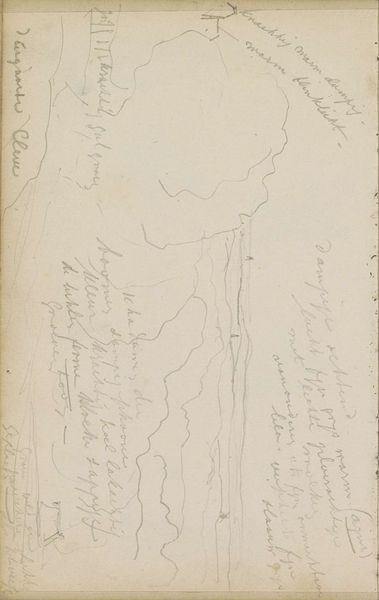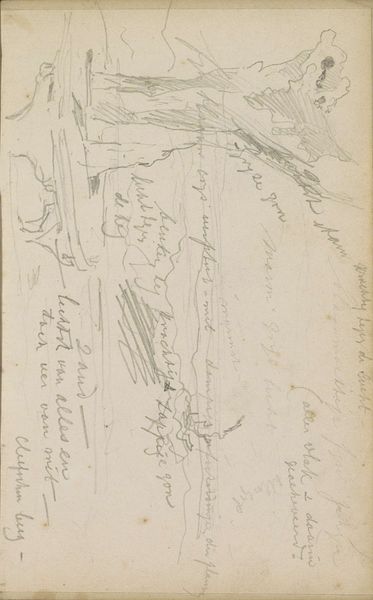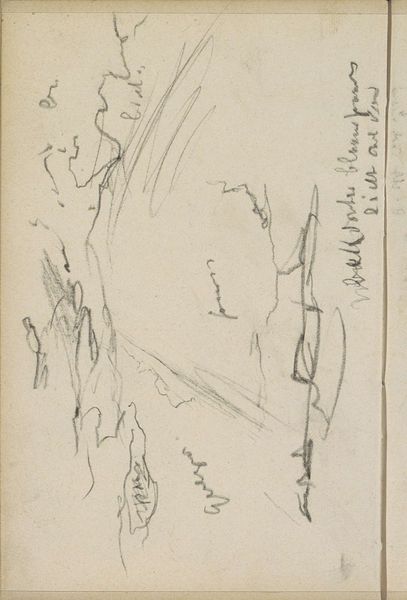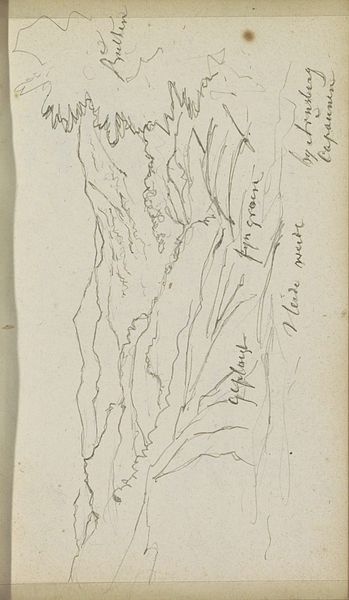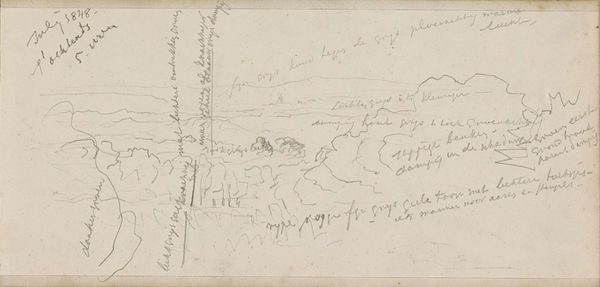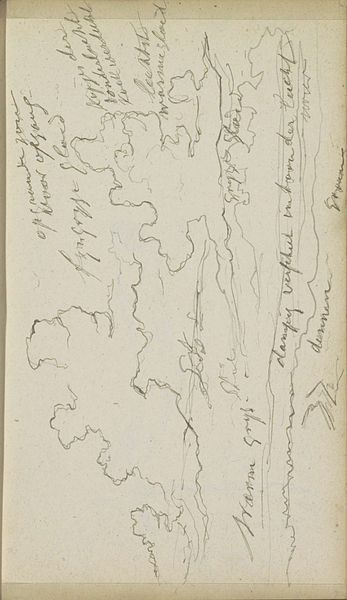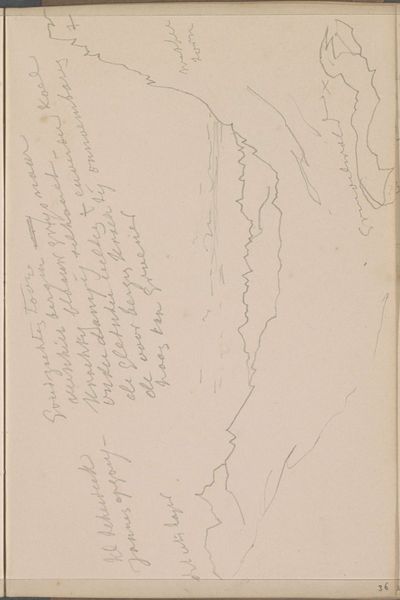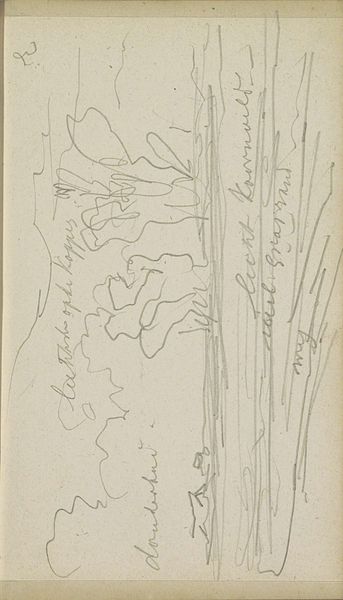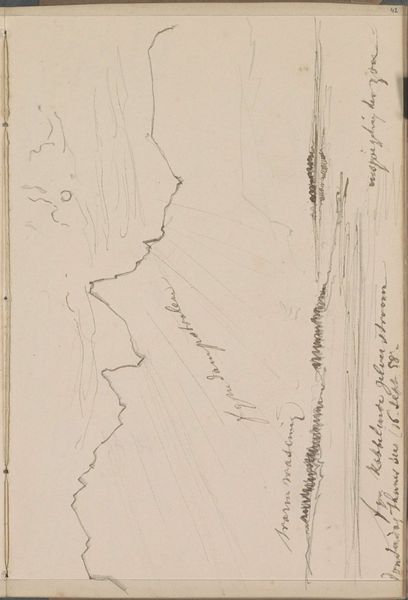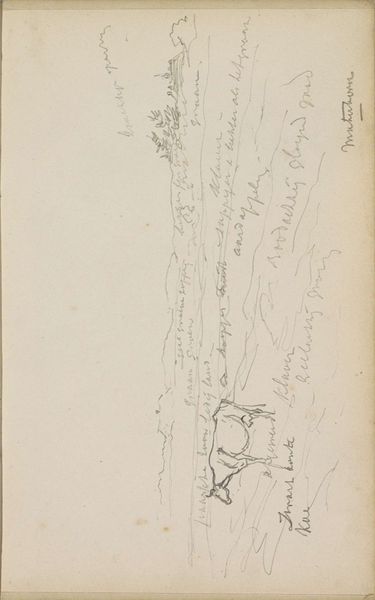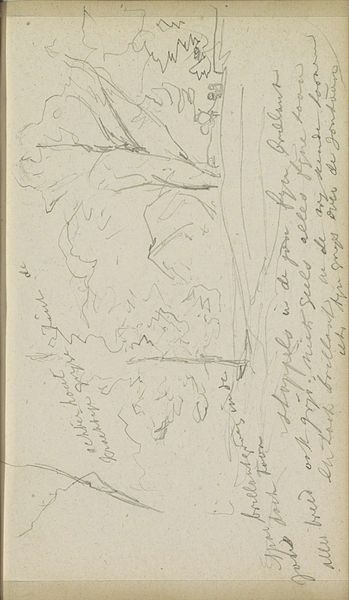
Copyright: Rijks Museum: Open Domain
Editor: Here we have Johannes Tavenraat's "Heuvellandschap," a landscape drawing using pencil, made sometime between 1839 and 1872. It strikes me as incredibly subtle; the barely-there lines almost evoke a sense of memory rather than direct observation. What do you see in this piece? Curator: For me, this drawing operates on several levels. Beyond its surface representation of a landscape, we must consider what it suggests about the romantic idealization of nature prevalent at the time. Landscape art often served as a vehicle for exploring national identity and colonial expansion. It can become a commentary on the exploitation of natural resources. How does the emptiness or desolation affect you? Editor: I see what you mean. Now I can see it looks more desolate. Curator: Yes, it begs the question: Who does this landscape serve, and at what cost? This relates to the social history of that particular landscape. What labor made it accessible, or extracted resources from it? These sketches don't always make that labor visible. And whose vision are we seeing, anyway? Was Tavenraat part of a landed gentry with vested interests? Editor: That's fascinating! So you're saying we can analyze even a simple pencil sketch through a lens of social and economic power. Curator: Absolutely. Art is never created in a vacuum. What this drawing holds is the key to a bigger historical discourse and its contemporary echoes regarding labor, environment, and representation. Editor: This has completely shifted my understanding. I thought it was a gentle landscape, but now it makes me want to dig a lot deeper into social questions. Curator: Precisely. Asking these critical questions helps us connect the past to the present. Hopefully, we see it is all interconnected.
Comments
No comments
Be the first to comment and join the conversation on the ultimate creative platform.
